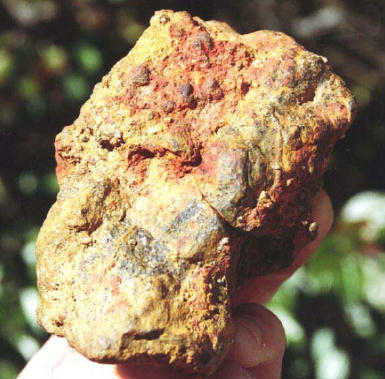It appears quite evident to the authors from the fossil evidence gathered by us, that there is a
continuing evolutionary progression, beginning perhaps around 17 million years ago with a race of
primitive ancestral hominids, through to the beginning of the Pliocene, and finally around the end of
that era into the Pleistocene with the appearance of proto-Homo erectus and his later Homo erectus
offshoot, culminating in Homo sapiens by at least 400,000 -300,000 years ago.
Somewhere along the way in the course of this evolutionary progression there were genetic
mutations. These mutations saw the appearance of giant hominid forms as already stated in the
previous chapter and also pygmy forms.
When exactly these evolutionary offshoots developed remains a mystery to scientists, so their
timing at our present knowledge is open to speculation.
We would here remind the reader that we are speaking of fossil evidence recovered in Australia
and not Asia or Africa and therefore the evidence presented by us remains highly controversial and not ‘politically correct’. Yet our theory we believe, in the current climate of speculation, based as it is upon
the interpretation of the fossil evidence at our disposal, should be treated as yet another alternative
explanation of the giant and pygmy evolutionary problem.
Palaeoanthropological finds made in Africa have long ago shown that our hominid ancestors
were small in stature to begin with. ‘Lucy’ discovered in Ethiopia in 1974 by Donald C. Johansson was
no more than 3½ ft [1.1m] in height. Lucy, an Australopithecine, lived around 3.4 million years ago,
while the Bega district New South Wales skull endocasts are of beings between 1.1m and 1.53m in
height who lived 7 million years ago.
There is no relationship between the two discoveries as Australopithecus was confined to
Africa, unless some future scientific discovery proves otherwise. All that can be said of the Bega district
fossils at present are that they are an ancestral form on the way to Homo erectus.
The authors have found a number of fossil footprint sites dating from Pliocene times,
containing both giant-size and modern human-size tracks, including child-size examples, whether these
later specimens are those of juveniles or pygmy hominids remains unestablished; although the presence
of giant hominid tracks in Pliocene deposits clearly shows that these beings had evolved from the
ancestral hominid line by this time.
It is also possible that, while some groups of the small ancestral
hominids began to increase in height, others for one genetic reason or another did not, thus forming
the earliest pygmy Homo line.
The available fossil skeletal evidence of giant hominids found by us, already described in the
previous chapter, so far only dates from the later half of the Pleistocene period and displays Homo
erectus relationships. Our pygmy Homo fossil evidence on the other hand, suggests that, apart from
possible beginnings some time in the Pliocene, the Pygmy Homo line was well established by early
Pleistocene times with the fossil evidence showing that more than one race is present in the fossil
record.
This is demonstrated by recent Gilroy fossil skull discoveries in South Australia and Western
Australia, and also by finds in the Sydney area made by Greg Foster revealed in this Chapter.
This chapter concerns itself with the fossil evidence for a Pygmy evolution in Australia, separate
to that of African pygmies. Anthropologists recognise that the Pygmy has a considerable antiquity in
Africa, whereas in Australia our scientists have only ever recognised one form, namely pygmy
Australoids of the Far North Queensland rainforests, which they believe are related to the former
Tasmanian Australoids whose features they shared, although the latter people were slightly taller.
As the traditions of our Aboriginal people will show later in this book, the early tribespeople
recognised a number of pygmy races throughout the continent, which they collectively designated as
the “little hairy people”, once again as with the taller Homo erectus/Yowie, they were described as ‘hairy’ due to the animal hide cloaks they wore...
Our theory is that, possibly Homo erectus fosterii may have been the ‘father’ of the later pygmy-size
Homo essingensis race, migrating bands of which might have moved northwards out of Australia over the
former land shelf, to establish themselves in the region that was to become the Indonesian islands chain
towards the close of the Pleistocene period. Here they gradually evolved into what are now known as
the ‘Hobbits’.
More fossil material is needed from Australia to support our theory, but we are confident
that this will eventually be uncovered.
Rex Gilroy
Australian Yowie Research Centre,
Katoomba, NSW
Monday 25th June 2007







